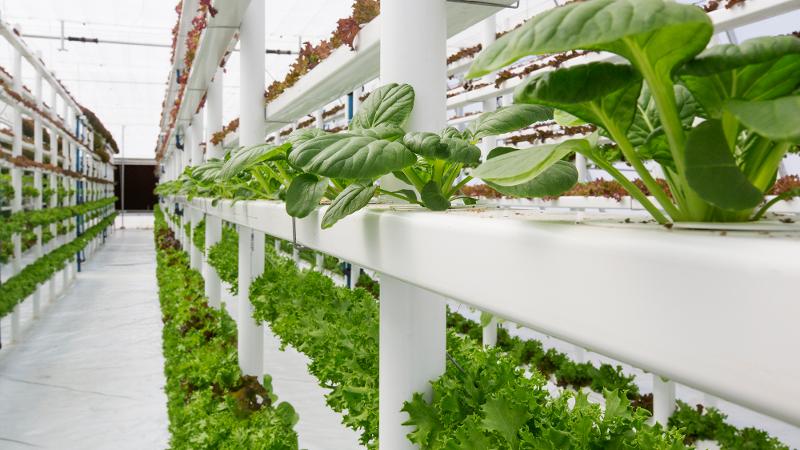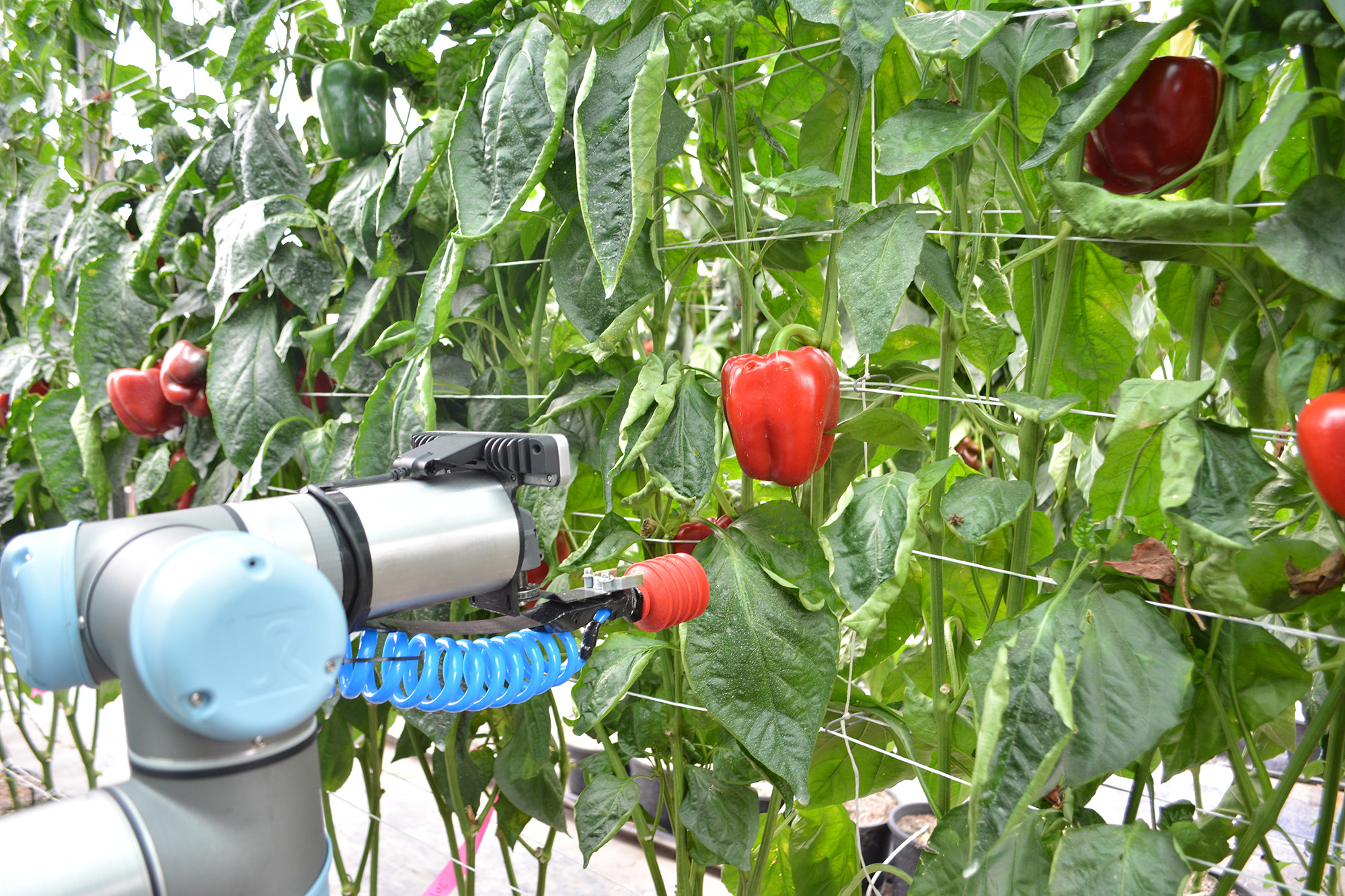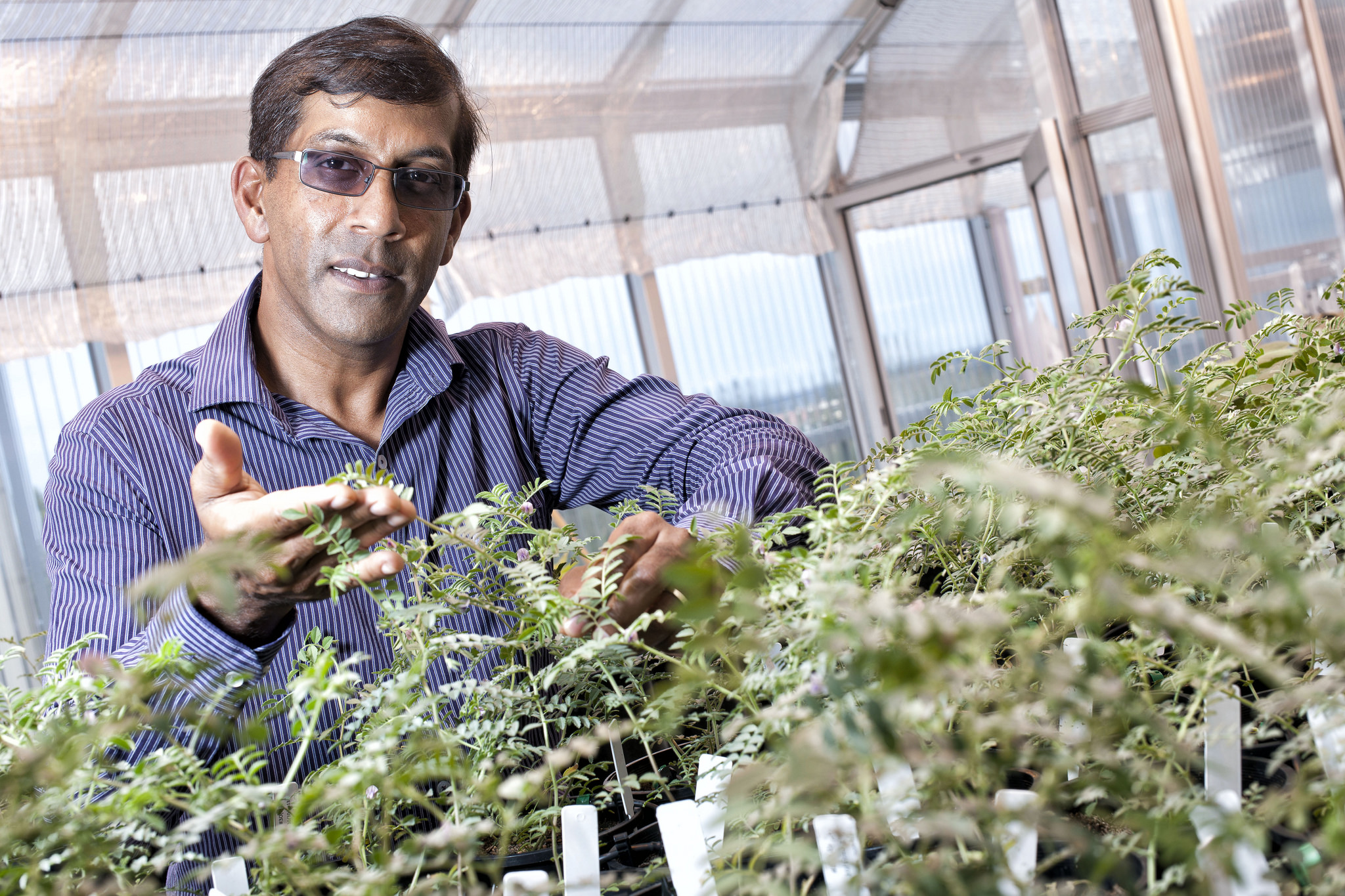
QUT researchers will play a key part in developing smart logistics to link growers with their markets and high-tech methods of growing customised food, with the announcement of the Future Food Systems Cooperative Research Centre.

The Future Food Systems CRC will involve more than 50 commercial and research partners, with the Federal Government injecting $35 million in funding over 10 years along with almost $150 million in support from the research centre’s educational and commercial participants.
QUT’s involvement in the CRC is spread across the centre’s three research and development programs of planning and logistics in linking growers to their markets, developing smart automated indoor cropping and creating nutrient-dense foods and hybrid food and medical goods tailored to growing domestic and export markets.
Professor Doug Baker will lead the research program into logistics and urban design that will identify planning policy, design and infrastructure for integrating high-tech growing and processing facilities, particularly around transport hubs and in regional centres.
“It’s about being smarter with agriculture and infrastructure, and integrating technology and robotics into that,” Professor Baker said.
“Working with local and state governments and our logistics partners, our planning templates and freight modelling tools will assist food hubs around Australia as they develop sustainable production and supply solutions.”
Professor Baker said an example of a future food system was greenhouses with automated vertical farming used to grow crops on or near airports or port areas, so that the crops could be shipped straight to their markers.
The CRC will look at food hubs around Australia including the new Western Sydney International (Nancy-Bird Walton) Airport, which will have a surrounding cluster of intensive agribusinesses creating high-value products for target markets in Asia.

Professor Sagadevan Mundree, Director of QUT’s Centre for Tropical Crops and Biocommodities, and Dr Chris Lehnert, a robotics researcher with the Australian Centre for Robotic Vision headquartered at QUT, will also lead foundation projects with the CRC.
Professor Mundree said the researchers would be using smart agricultural technologies to develop enhanced-proteins foods and develop scientifically-based tools and methods to create unique Australian-made premium food goods for domestic and export markets.
Professor Mundree will be working with a range of commercial partners including partners such as Greenbio Group Pty Ltd which will partner in projects in robotics and automation, optimisation and development of novel hydroponic vertical systems, and new crop varieties for vertical systems.
Dr Lehnert will be working on developing robotics and smart technology for vertical and indoor protected cropping.
“The future potential of robotics in indoor protected cropping will be their ability to intelligently sense, think and act in order to reduce production costs and maximise output value in terms of crop yield and quality,” Dr Lehnert said.
“Robotics taking action, such as autonomous harvesting within indoor protected cropping will be a game changer for growers who are struggling to reduce their production costs.”
The CRC was initiated by NSW Farmers Association on behalf of the national representative farm sector and as part of a broader industry-wide push to increase value-adding capability, product differentiation and responsiveness to consumer preferences.
CRC Chair and National Farmers’ Federation President Fiona Simson said that sophisticated technology and stronger collaboration across the supply chain was needed for Australia to become a leader in booming export markets for trusted fresh foods and advanced precision nutrition goods.
“Our industry recognises the essential role of innovation as we enter this critical growth phase. The strong backing for this CRC across all sectors is a sign that Australian agrifood is ready to make a leap forward in export readiness and capability,” Ms Simson said.
She said that the Cooperative Research Centre model was ideal for addressing industry growth challenges that demand sustained collaboration and complex transdisciplinary research.
“The next growth phase in our industry demands strategic adoption of advanced science and technology across production, logistics, energy, water, and manufacturing.
“We have the talent in Australia to become a global leader both in future food technology and future food goods,” she said.
Media contact:
Rod Chester, QUT Media, 07 3138 9449, rod.chester@qut.edu.au
After hours: Rose Trapnell, 0407 585 901, media@qut.edu.au




